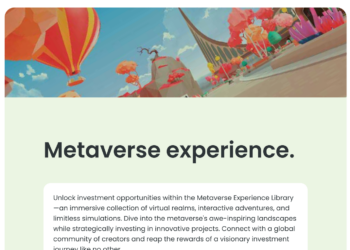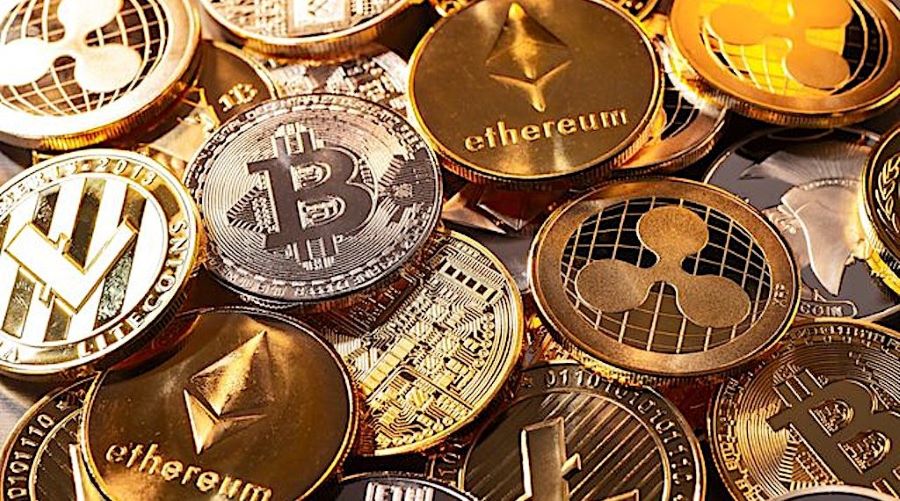The metaverse has been one of the most talked about concepts in the cryptocurrency ecosystem, following the rise of the Non-Fungible Token (NFT) ecosystem. While the idea of an alternate reality is interesting to see, many are still yet to understand how these virtual reality spaces could prove monetizable in the future. Although we have seen traditional businesses venture into the space, recent data poses a concern that the consumer market may not be ready for this new innovation or they just don’t simply understand the value proposition of Virtual Reality.
Looking at two of the biggest companies in the Metaverse space, Decentraland and Sandbox, whose native tokens, MANA and SAND, are worth over $1.2 billion in valuations each, we see that the activities on these platforms are very low, some might say extinct as there is not enough to bring users back every day. According to data from DappRadar, a crypto-focused data analytics company, Decentraland, the Ethereum-based virtual world, had 38 active users in the past 24 hours, while competitor The Sandbox boasted 522 active users in that same time. They both combined to attract only 560 users to the Metaverse space.
An active user, according to DappRadar, is defined as a unique wallet address interaction with the platform’s smart contract. For example, logging onto The Sandbox or Decentraland to make a purchase with SAND or MANA, each platform’s respective native utility token is counted as an “active use.” This analysis is however flawed because it does not necessarily mean that these users logged in to actively experience these platforms for what they have to offer.
What You Should Know
- DappRadar’s compilation of daily active users doesn’t account for people who log in and mosey around a metaverse platform or drop in briefly for an event, such as a virtual fashion week. It also likely means that these spaces are not where people are making transactions such as buying non-fungible tokens (NFT).
- A developer might defend the low daily stats with the familiar phrase, “don’t hate the player, hate the game;” but it seems it’s not just one quiet day for the two metaverse platforms.
- The largest number of daily users ever on Decentraland was 675, according to DappRadar. For The Sandbox, that number was larger at about 4,503.
- Sam Hamilton, Creative Director at Decentraland, told CoinDesk that while they report 8,000 users on average per day, this accounts for any individual who passively interacts with the metaverse. He noted that while they saw peak attendees in March, the number of “tourists and spectators” has since cooled down.
- Despite low user metrics, Decentraland and The Sandbox have high valuations. According to data from CoinMarketCap, Decentraland and The Sandbox both have market caps of approximately $1.2 billion each. While the play-to-earn game Axie Infinity has a $1.02 billion market capitalization, with nearly 22,000 daily users reported on DappRadar suggests that open-ended metaverses that don’t provide incentives to stay, such as gaming or trading, may not see regular returning users at this point.
- As with the entire cryptocurrency space, we have also seen a decline in the market capitalization of the entire space compared to last year. As of today, the metaverse’s total market capitalization currently stands at $12.3 billion, led by the Yuga Labs’ APE token, the supposed native token for its upcoming Metaverse that launched earlier this year. The entire Metaverse space in the last 24 hours has a total trading volume of approximately $869 million which accounts for just 1.97% of the total volume of transactions, which currently seats at $44 billion as of the time of this writing.
- Although the metaverse may be enough of a buzzword for companies to rebrand their names around its concept, mass adoption will likely still take a while. Sasha Fleyshman, portfolio manager at digital asset investment firm Arca, explained that metaverse platforms will be much more valuable to users when they actually operate as intended. Sasha explained, “Anyone telling you that there’s a metaverse today that has worked is lying through their teeth.”
- Beverage company Snapple’s pop-up bodega in Decentraland last August sparked questions about mainstream use cases for promotional content in the metaverse. In July, skater Tony Hawk announced his virtual skatepark paired with an avatar collection in The Sandbox, which aims to bring fans from his $1.4 billion “Tony Hawk Pro Skater” video game to a new, more interactive platform. Set to run from October 19 to 23, the turnout of virtual skaters may be larger than the users purchasing Hawk’s NFTs in SAND.
- On this, Sasha stated, “In my opinion, we’re leaning towards a lack of product-market fit on that side … irrespective of their valuation.”
While the current economic reality has shown that the appeal for the riskier assets is a thing of the past and the interest for the entire crypto industry, particularly the Metaverse space is relatively low, however, we cannot ignore the significant progress made in the Metaverse industry, especially since Meta, formerly Facebook, joined the race. The hype might be down for now, however, in other to shore up interest, more should be done in educating and teaching people about this sector and the income potential it possesses.
















.gif)






